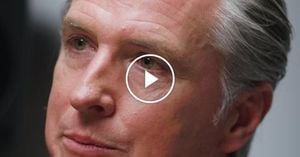In a move that’s sending ripples through financial markets and reigniting old debates in Washington, the Federal Reserve has announced it will halt its aggressive balance sheet reduction—known as Quantitative Tightening (QT)—on December 1, 2025. The decision, made by the Federal Open Market Committee (FOMC) in October and reported on November 18, marks a pivotal shift in the Fed’s post-pandemic strategy, signaling that policymakers believe bank reserves are nearing an “ample” level and that further reduction could trigger unwanted stress in money markets.
Since June 2022, the Fed has been steadily shrinking its balance sheet, which had ballooned to nearly $9 trillion after the COVID-19 pandemic’s Quantitative Easing (QE) programs. By October 2025, that figure had dropped by more than $2 trillion, settling between $6.25 trillion and $6.5 trillion. This reduction, the most aggressive in modern Fed history, was designed to pull excess liquidity from the financial system and help rein in soaring inflation.
But as bank reserves dipped below $3 trillion—edging closer to the “ample” threshold of about $2.7 trillion, as estimated by Fed Governor Christopher Waller—the central bank started to see warning signs. Volatility in repurchase agreement (repo) rates spiked around tax payment deadlines and big Treasury issuance dates. Banks began leaning more heavily on the Fed’s standing repo facility, a clear indicator of tightening liquidity. While Fed Chair Jerome Powell still called reserves “abundant,” he acknowledged they were brushing up against the lower limits of comfort, prompting a preemptive policy pivot.
“The Fed’s decision to halt QT is a careful balancing act,” noted Market Minute, “acknowledging the potential for undue stress on the banking system and broader economy.” The move suggests a less restrictive monetary environment than markets had anticipated, with immediate implications for interest rates and a wide range of industries.
So who stands to gain from this strategic shift? Sectors sensitive to interest rates are likely to be among the biggest winners. Homebuilders such as D.R. Horton and Lennar, mortgage lenders, and the broader housing industry could see a boost as borrowing costs stabilize or even decline from their recent peaks. The automotive sector, with giants like General Motors and Ford, also stands to benefit, since consumer financing is a lifeline for car sales. High-growth technology firms—think Amazon and Microsoft—might find it easier and cheaper to fund expansion and innovation projects.
Banks like JPMorgan Chase and Bank of America could enjoy greater stability in their reserve levels and less stress in money markets, though there’s a trade-off: if interest rates drop, their net interest margins could come under pressure. Companies with hefty debt loads may also find it easier to refinance, shaving millions off their interest expenses.
On the flip side, some corners of the financial industry that thrive on higher interest rates or tighter financial conditions might see headwinds. Entities betting on a continued tightening cycle will need to rethink their strategies. Yet, as Market Minute points out, “the more significant impact is likely to be a shift in the broader economic narrative rather than direct negative consequences for specific companies.”
The Fed’s decision is about more than just short-term market moves. It’s a signal that the central bank is rethinking what “normal” looks like for its balance sheet. For years, policymakers have debated whether the Fed should return to a minimal balance sheet—mostly Treasury securities, as was the case before 2008—or accept that a much larger balance sheet is here to stay. Kansas City Fed President Jeffrey Schmid has called for the “smallest and least distortive balance sheet” possible, warning that a bloated Fed balance sheet blurs the line between monetary and fiscal policy. Vice Chair Bowman has echoed those sentiments.
External critics, such as former Fed Governor Kevin Warsh and Treasury Secretary Scott Bessent, have gone even further. They’ve blasted past QE programs for creating a “wealth effect” and acting as a “de facto backstop for asset owners.” Their calls for an even more aggressive reduction in the Fed’s holdings have grown louder as the balance sheet remains far above pre-crisis levels.
Yet, the Fed’s latest move reflects a nuanced consensus: prioritize financial stability over a continued, possibly disruptive, withdrawal of liquidity. According to Bloomberg, this debate is now front and center in Washington, with some Republicans pushing hard for a smaller Fed balance sheet. The political dimension is nothing new. As Bloomberg’s Chris Anstey and Enda Curran remind readers, skepticism about bold economic experiments dates back decades—George H.W. Bush famously derided “voodoo economics” in 1980, a reference to the idea that you could cut taxes, boost defense spending, and balance the budget all at once. Today’s arguments about the Fed’s role and the risks of a large balance sheet echo those old ideological divides, albeit in a new context.
Looking ahead, the Fed plans to keep letting agency securities—such as mortgage-backed securities (MBS)—run off its balance sheet, reinvesting the proceeds into Treasury bills. This gradual shift aims to reshape the portfolio toward Treasuries, which many policymakers prefer to avoid distorting specific sectors like housing. The legacy of crisis-era QE, with its heavy tilt toward MBS, has drawn criticism for potentially warping the housing market. The current strategy is meant to address those concerns without sparking instability.
But there’s a bigger question looming: Will the Fed’s balance sheet ever return to its pre-2008 scale, or is a “new normal” here to stay? Most signals point to the latter. The Fed’s balance sheet could settle at a permanently larger size, with future monetary policy relying more on tools like interest on reserves and standing liquidity facilities. This would mark a profound shift in how the central bank manages the economy—one that could shape policy responses for years to come.
For investors, the immediate aftermath could bring a stabilization or even a slight dip in long-term bond yields as the supply of bonds from the Fed’s runoff shrinks. Borrowing costs for companies and households might ease, providing a modest tailwind for economic activity heading into 2026. Sectors like real estate, utilities, and growth-oriented tech could see renewed investor interest if capital costs fall and sentiment improves.
Still, the Fed isn’t abandoning its fight against inflation. If price pressures persist, officials could turn to other tightening measures—potentially raising the federal funds rate or even restarting QT down the road. The path forward is uncertain, and the central bank’s evolving stance will require investors, companies, and policymakers to stay nimble.
The decision to halt Quantitative Tightening is more than a technical adjustment; it’s a window into the Fed’s evolving philosophy and the ongoing tug-of-war between financial stability and inflation control. As the dust settles, all eyes will be on the Fed’s next moves—and on the broader debate about the proper role of central banks in a world forever changed by crisis-era interventions.
In the meantime, the Fed’s choice to prioritize stability as bank reserves approach “ample” levels has set a new tone for monetary policy. Whether this marks the start of a lasting “new normal” or just another chapter in the central bank’s ongoing experiment remains to be seen. But one thing’s certain: the conversation about the Fed’s balance sheet—and its place in the economy—is far from over.




